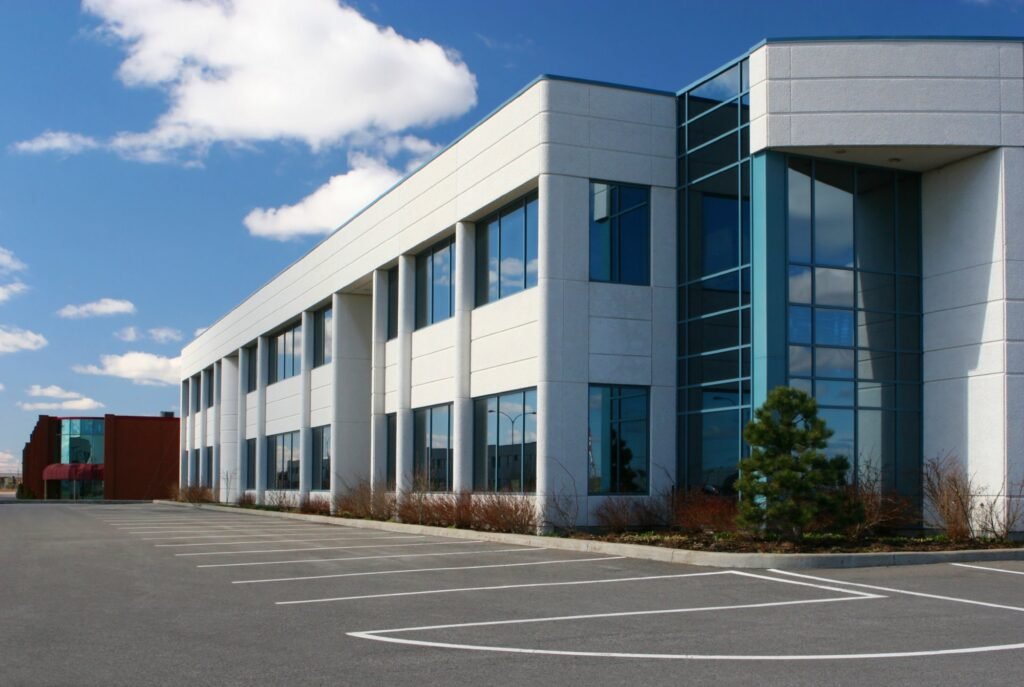The amount of money flowing into UK commercial property fell across all sectors, particularly industrial, but also offices and retail, that’s according to market analysis carried out by debt advisory specialists, Sirius Property Finance.
And office values – secondary in particular – are still falling as the asset class comes under pressure from hybrid working and the heightened risk of obsolescence due, among other things, to low energy efficiency ratings.
However, despite commercial property investment remaining subdued in Q1, 2023, there is a more positive outlook for both industrial and prime office sectors according to MSCI and the Royal Institution of Chartered Surveyors’s (RICS) commercial property monitor.
RICS latest findings show that the sector has gone through a decline and continues to struggle with higher borrowing costs and a subdued UK economic growth outlook. This, the chartered surveyor’s professional body says, is particularly affecting demand in the ‘�secondary office’ and retail parts of the market.
But the current RICS survey is more upbeat than the previous quarter’s with a majority of respondents still viewing the market in a downturn, but more respondents now feel that conditions are stabilising, or even beginning to improve.
The Sirius analysis
Sirius Property Finance carried out its own analysis of the commercial property investment market over the past six months. Sirius compared this directly to investment over preceding six months in order to get a full understanding of current trends in what is one of the UK economy’s most vital cogs.
Their research finds that in terms of money invested, the biggest decline has been seen in the industrial sector, falling by -55%. In the last six months, �2.9bn has been invested, down from �6.9bn in the six months before that.
Office space investment declined by -55% in the past six months, driven by a -63% drop in investment outside of central London. Despite this, office space is still receiving the highest amount of total investment at �3.8bn.
Meanwhile, according to the Sirius findings, retail & leisure declined by -45%, with this decline being driven by a drop of -75% coming in shopping centre investment, followed closely by a -74% drop in leisure investment.
In terms of the number of transactions, offices have seen the sharpest decline, falling by -44%, driven by a -64% drop in central London.
Retail & leisure transactions have fallen by -40% with shop units enduring the most severe drop of -47%. Meanwhile, industrial transactions have fallen by -35%.
The average amount of money invested via each transaction has also fallen across the board. The biggest drop has come from the industrial sector, falling -35% from �22m to �14.3m.
The average investment made into office space has reduced by -19%.
For retail & leisure the decline is -8%. This, however, is only saved from being a more dramatic drop by a remarkable 194% increase in the average transaction amount put into shop units which has risen from �5.4m to �15.9m in the last six months.
Kimberley Gates, head of corporate partnerships at Sirius Property Finance, has said:
‘It has been a difficult six months for the commercial sector.
‘It has been struggling since the start of the pandemic and the subsequent retreat from town and city centres, but now that additional economic uncertainty has been placed on top, the situation has worsened.’�
She adds:
‘Looking forward, the commercial sector’s recovery is going to be dependent on taking a more contemporary approach to space. While industrial units are likely to return to strength due to the immovable presence of e-commerce, retail and offices need to adapt to modern sensibilities.
‘Mixed-use space is important ‘� living, working, and playing in one multifaceted building, for example ‘� but so too is a more experiential approach to physical retail, providing shoppers with something more than online retail can provide.
‘We’ve seen how successful this can be with Barnes & Noble in America, and beauty brand Sephora across mainland Europe.’�
RICS senior economist Tarrant Parsons said about their research:
‘Although the picture across the UK commercial property market remains generally subdued in the face of higher interest rates and a soft economic outlook, the latest [RICS] survey feedback tentatively suggests that the most difficult period for the market may now have passed.
‘Capital value expectations for industrial assets returned to modestly positive territory, having fallen sharply at the end of last year. This improvement has been supported by still solid occupier conditions across the sector, with demand for industrial space continuing to outstrip supply.
‘Likewise, many of the more alternative sectors, such as aged care facilities, life sciences, data centres and student housing display a resilient outlook for the year ahead. By way of contrast, secondary office and retail properties continue to struggle, evidenced by rental and capital value projections remaining deeply negative, across both segments for the coming twelve months.”
According to RICS, tenant demand was -3% in the first three months of the year, a figure that’s a big improvement on -20% for the final quarter 2022. Industrial has picked-up for occupier demand, showing a net balance of 16%, compared with just 6% in Q4, 2022.
RICS found tenant demand ‘flat to marginally negative” for office space, with a net balance of -6%, and continuing to fall across the retail sector to -23% but this was less negative than in the previous quarter, and respondents were more positive about prime offices.
RICS says:
“Expectations turned from negative to slightly positive in both the prime and secondary portions of the industrial market. Across the prime office sector, values are now seen holding steady over the year ahead (net balance 6% vs minus 31% in Q4 2022), although expectations remain deeply negative for secondary office values (net balance minus 44% compared to minus 65% previously).”

